9 Nights / 10 Days
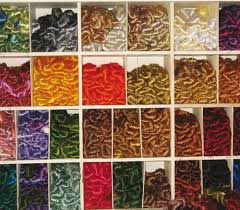
Arrival in Ahmedabad and transfer to hotel.
Ahmedabad is Located on the banks of the river Sabarmati, the city was founded by Sultan Ahmad Shah in 1411. Today it is one of the fastest growing cities of India and is an immense repository of tradition, history & culture. Its famous walled area is one of the finest examples of community living & the city thrived as the textile capital & was nicknamed "Manchester of the East" in 1888. This multicultural city is home to some of the finest Indo-Saracenic mosques & Jain temples. The Sidi Sayed Ni Jaali with its delicately curved branches in a masterpiece carved in stone. The elaborate havelis of wealthy Guajarati Sethias are part of the city's living heritage. In the early 20th century Ahmedabed grew an important center for nationalist activities after Mahatma Gandhi established two ashrams in the city- the Kochrab Ashram in 1915 and Sabarmati Ashram in 1917. The thriving city has always been the financial capital of Gujarat and after independence; international architects like Louis Kahn and Le Corbusier were commissioned to build modern architectural marvels in the city. While the former built the Indian Institute of Management (IIM) building in brick, le Corbusier designed the Shodhan and Sarabhai Villas, the Sanskar Kendra and the Mill Owner's Association in stark concrete. Like any other mega-polis, Ahmedabad straddles the ancient and modern with equal poise.
The old city with its narrow, meandering streets is a conglomeration of 600 pols, divided according to caste and occupation. Each pol or family estate is decorated with large gates and sometimes even sub-gates to increase the bond amongst families. There are over 12000 havelies and 100 chabutras or bird feeding platforms and the stately Badshah No Haziro, the resting place of Sultan Ahmed Shah. The ornate jaalis amongst the pillared portico filter the afternoon sun to form remarkable shadows on the marble floor. Behind the mausoleum, is the Great Mosque or the Jami Masjid built in 1423 by the Sultan Ahmed Shah I.
During the sight seeing tour one can visit The Calico Museum with a prior permission from museum authority. The Calico Museum of Textiles, inaugurated in 1949, is today justly regarded as one among the foremost textiles museums in the world and an important India institution. Its outstanding collection of Indian Fabrics exemplifies handicraft textiles spanning five centuries and attracts increasing numbers of Indians and international research scholars. Most significant, it has become a major reference area for our surviving handicraftsmen and also for the India machine-textile industry. The museum encompasses too large an area its energies on the vast and vital field of handicraft textiles, devoting less and less time to industrial fabrics.
The museum conduct 02 hours guided tour everyday, except Wednesdays and public holidays at 1030 Hrs to 1230 Hrs. Rights of admission to the Museum and the Galleries are reserved by the Management. (NO ENTRY AFTER 10:45 am).
Afternoon - visit Gandhi Ashram, Shreyas Folk & Art Museum, and Institute of Indology.
Evening Market at Law Garden displays beautiful textile handicrafts of Gujarat.
Vishalla is a restaurant with traditional Gujarati food in village surroundings. It has Vichar Utensil Museum worth visiting. The museum houses a unique collection of utensils.
Overnight stay at Ahmedabad.
After breakfast drive to Dasada / Bajana 97 km enroute visiting Adalaj Step well, Modhera Sun Temple & Patan.
Adalaj Step-well: Situated 17 km north of Ahmedabad, this step well at the village of Adalaj is another fine example of magnificent architectural form. 'Adalaj Vav' is richly carved. Every pillar and wall surface is covered with leaves, flowers, birds, fishes and friezes of ornamental designs.
Modhera: The Sun temple of Modhera is one of the finest examples of Indian architecture of its period. Built in 1026 A. D. the temple is dedicated to the Sun-God, Surya and stands high on a plinth overlooking a deep stone-steeped tank. Every inch of the edifice, both inside and outside is magnificently carved with Gods and Goddesses, birds, beasts and flowers. Sun Temple of Modhera was built by King Bhimdev I (1026-27) and bears some resemblance to the later and far better known, Sun Temple of Konark in the state of Orissa, which it predates by some 200 years. Like that temple, it was designed so that the dawn sun shone on the image of Surya, the sun God, at the time of the equinoxes. The main hall and shrine are reached through a pillared porch and the temple exterior is intricately and delicately carved. As with the temple of Somnath, this fine temple was ruined by Mohamed of Ghazni.
Patan: Home of the famous patola silk saris, Patan is a beautiful old town with Jain temples and carved wooden houses. Rani Ki vav (step well) is an excellent example of subterranean architecture of Gujarat. The exclusively carved side walls, pillars, beams, series of steps & platforms lead to the elaborately carved water well. Every surface is adorned with finely chiseled sculptures of maidens & Hindu deities, religious motifs & geometrical patterns.
Drive to Dasada/Bajana. Overnight stay at Dasada / Bajana.
Today morning enjoy morning safari to Little Rann of Kutch.
The Little Rann of Kutch: The highlight of this sanctuary is the Asiatic Wild Ass or 'Gudkhur' that is endemic to the region & is one of the most endangered species in the world. Other mammals that could be seen are nilgai, black buck antelope, chinkara gazelle, Indian wolf, Indian desert foxes, jackals & lesser cats. Also is a paradise for bird watchers. The key dryland birds are McQueen's houbara bustard, chestnut bellied & spotted sand grouse, Indian courser, 13 species of larks & sparrow larks, 5 of quails (including buttonquails), thick-knee, desert warbler, desert & variable wheatear, aquila eagles, short toed snake eagle, six species of falcon & three harriers. Five species of vulture have been recorded. Apart from all these you can hope to see greater & lesser flamingo, three species of pelican, spoonbill, demoiselle & common cranes, and a number of ducks in flocks of several thousand during winters.
Post lunch, an excursion to Wadhwan, the historic walled town is centre for bandhni tie & dye weaving and metal crafts.
Overnight stay at Dasada / Bajana.
After breakfast, drive to Bhuj. Arrival at Bhuj and check in at Hotel . Bhuj - Bhuj is an amazing place; People are really fantastic and the city of Bhuj is really relaxed and you can just wander around without hassle and there is plenty to see. It is the most magical region in all of India. Life in a very different traditional way is fascinating . - the women are amazing with their magnificent silver jewelry and heavily embroidered dresses. Here you will come across master craft people' expositioning their traditional art, turning out master pieces everyday. Their ornaments, clothes, utensils, everything they use - will make you feel as if you have stepped into lifestyle museum leaving you spellbound the tribal villages, specializing in different forms of handicraft including embroidery, block printing and tie and dye. Color and eye for design is the keynote of Gujarat handicrafts, and is an expression of their rich traditional heritage and personal artistic talent.
Kutchi people are very friendly when you are visiting village please wear full dress they will respect you.
Please note that This is to bring your kind notice that for now all tourists visiting Bhuj / Kutch must have to Obtain the permit from the DSP Office (at Bhuj) for the interior Kutch (Bhuj) Visit. Fee is not applicable (subject to change) & the procedure for obtaining the permit as under. To visit the villages north of Kutch, including Khavda, Bhirandiara and Dumaro, permission is required from the District Collector).
After noon sight seeing of Bhuj. Bhuj derives its name from the Bhujiyo Dungar, a hill, overlooking the present day Bhuj Town. Bhuj is a typical example of a Desert Town located between two geographical features - Bhujiyo Dungar on the East and Hamirsar Lake on the West. It was the capital of the former princely State of Kutch till 1947 AD. The Rajput Rulers of Kutch came from Sindh or Northern Indian in the late 15TH Century AD and settled at Bhuj. Rao Khengarji I chose the strategic location at the base of Bhujiyo Dungar and founded the city of Bhuj in 1548 AD.
Aina Mahal - was constructed by Rao Lakhpatji (1707 - 1761 AD), who was a great patron of Art, Architecture, Music and Literature. Aina Mahal is a unique example of an Indian Palace built in the mid 18TH Century AD with European influence. Its design and decorations were the outcome of a royal dream translated into reality by a master craftsman, Ramsinh Malam. Ramsinh stayed in Holland for 17 years and was trained in the crafts of clock making, cannon fabrication, enameling, tile making and architecture. On his return he undertook the Mirror Work, Tile Work and Fountains at Aina Mahal. Aina Mahal is a part of a large Palace Complex - is a two storied building with Durbar Hall, Hall of Mirrors and Suites for Royal Family.
Overnight stay at Bhuj.
After breakfast full day sight seeing of Bhuj. Visit the Prag Mahal - Rao Pragmalji II (1838 - 76 AD) undertook the construction of Prag Mahal. He appointed a famous Architect - Colonel Henry Saint Wilkins to design Prag Mahal, who had designed Deccan College, Sasoon Hospital, Ohel David Synagogue, St. Paul's Church at Pune, Frere Hall at Karachi and Secretariat at Bombay. Prag Mahal took 10 years to build at the cost of 20 Lakhs Rupees. It is built in the Italian Gothic Style, having a large Durbar Hall, Big Rooms, wide Verandahs and a 45 m. high lofty Bell Tower. The Palace was built using the various type of Indian Craftsmanship combined with European Architectural design.
The Kutch Museum - formerly known as the Fergusson Museum, was founded by Maharao Khengarji III in 1877 AD. It is the oldest Museum in Gujarat. Constructed in the Italian Style, the museum is located in picturesque surroundings on the bank of Hamirsar Lake. The Museum has been a centre of attraction for Scholars due to its large collection of Kshatrapa inscriptions, various Archaeological Objects, fine collection of Arms and specimens of Various Crafts of the Kutch Region.
Bharatiya Sanskruti Darshan - Mr. Ramsinhji K Rathod, a Scholar of the Folk Art of Kutch and winner of many State Government Awards has created this Museum. The museum epitomizes the rustic life styles of the Kutchi Villager containing around 4500 exhibits. Also there are more than 1500 rare books on Art and Culture. This museum has five major sections. In the Ethnological section, Sahitya Chitra, in the central hall can be found rare works of Literature. In other sections are interesting artifacts such as Leather Embroidery, Wood Work, Wood Carvings, Terra Cotta, Wall Paintings, Bead Work, Stone Carvings, Musical Instruments, Knives and Swords and Silver Work. Inside one of the huts is the intricately designed "Kothala" (the Treasury). In olden times, ornaments, money, and other valuables of the royalty were kept in the "Kothala". Hamirsar Lake is situated in the middle of the town, the refreshing rainwater filled Hamirsar Lake makes for a lovely snap shot of old Bhuj.
Arrive at Mandvi After lunch (65kms) Mandvi is a lovely place to visit. Enjoy the beach and watchthe famous tie and dye being done. Mandvi was established by Rao Khengarji in 1585 AD. At one time it was a very famous Harbour. It was connected with South Africa, Zanzibar, Arabia, Malaysia, China and Japan. It is famous for Ship Building and for its beautiful clean beach. Mandvi has some very beautiful houses belonging to rich Merchants with Stone Carving & Plaster Decorations. Their architectural style reflects the fusion of Indian & European styles of architecture.
Visit to Vijay Vilas Palace - This Royal abode was the Summer Palace built in Rajasthan style for Maharao Vijayrajji in 1929 AD. The architect and craftsmen from Jaipur designed and constructed the Palace. It has all the elements of Rajput architecture and draws largely on the plan of Orchha & Datia. The central high dome on the pillars, the Bengal Domes on sides, the windows with colored glass, carved stone jalls, domed bastions at the corners, extended porch and other exquisitely stone carved elements, make the palace worth visiting. It has its own private beach, maintained in an eco-friendly manner to preserve its pristine beauty. Take Lunch at Mandvi & enjoy Camel Safari, Buggy Ride at Mandvi Beach.
Overnight stay at Bhuj.
After breakfast, proceed for full day excursion tour to Handicrafts Villages of Banni Region. The grasslands of Banni are scattered with villages of pastoral groups. As the women of these groups do embroidery for their personal use and a secondary income, this is one of the highest concentration area of craftswomen in the world. There are many differences in embroidery style which create and maintain distinction that identify community by the stitches, techniques & motifs of the embroidery.
Khavda (90 Km. Approx.) - a town of Pachcham Region. One can find a tiny market and a few stalls serving up Kutchi snacks & tea. One can visit to Khatrivas to see artisans printing & selling Ajrakh. The town also has skilled Leather Craftsmen and there are some shops retailing local crafts, including Leather Slippers. Off the main road is a clinic run by Kutch Mahila Vikas Sangathan (KMVS), Federation of Kutchi Women's groups. KMVS has trained local midwives in modern and locally suitable healthcare practices. The KMVS Office in Khavda is run almost entirely by local women and also has a small retail outlet selling wonderfully intricate embroideries under the producer group's brand name "QASAB" which means "Craft Skill".
Ludia Village is comprised of several hamlets belonging to the Meghwal & Samma Communities. The latter community, primarily herdsmen, is more conservative when it comes to tourists. Gandhi nu Gam, populated by the Meghwal community, features beautifully Painted Bhungas organized around a Temple. The Kanjari (Blouses) of the women and the Bhunga decoration of this village are especially colorful. To curb exploitation & experiment with community marketing, the hamlet has set up an "Otlo" or a roofed platform next to the Temple, where each household brings out their embroidered goods for selling. (Please respect their effort and avoid perusing items and individual household). The remaining hamlets belong to the Samma Community, who are primarily pastoralists and slightly more conservative towards tourists.
Drive to Hodka. Take typical Kutchi Lunch at Village Resort.
Hodka - a cultural village is located in the Banni Grassland, right on the edge of the great Salt Desert - the Rann. The name Hodka is derived from the Gujarati word "Hodi" meaning Boat, as the shape of the Jheel is believed to be in the shape of a Boat. It is believed to have been set up by the Halepotra clan. 'Halepotra' literally means the 'Son or the descendant of Halaji', who is believed to have immigrated from Sindh. The village is now a part of National project and is famous for its craft like Decorative Mirrors, Lamps, Hand Fans, Letter Boxes, Wall Hanging, Leather, Clay, Wood, Metal,Mud Work and especially the exquisite Silver Jewellery. The artisans sell their goods directly from their artistic Huts.
Bhirandiyara - is a favorite Tea stop for locals and visitors alike on the road to Khavda. The village boasts a delicious sweet - fresh Maavo. This milk-based sweet is best when eaten hot. Most of the roadside stalls sell Maavo. The local Meghwal Community has exquisite embroideries and skillfully decorated, colorful Mud Bhungas.
Overnight stay at Bhuj.
After early Breakfast, an excursion trip to Ajrakhpur (25 Km. approx. ) - the artisans of Ajrakhpur specialize in Ajrakh - a Block Printed cotton cloth used traditionally by local herdsmen with natural dies. Its geometrical and nonfigurative motifs often mirror those appearing in Islamic - influenced Indian architecture.
On your way back, stop at Bhujodi - a village skilled in traditional Bandhani (tie & dye), block printing and weaving. Here you can view live demonstrations and buy anything from shawls to blankets from the artisans directly. Bhujodi is also a centre for Piltoom weaving, Mewada Embroidery & Wood Carving. Nearby is the Hiralakshmi Crafts Park - a nonprofit undertaking by the Ashapura Group of Companies that works with artisans throughout Kutch to show their skills and retail their crafts. Not far from Bhujodi is Shrujan, a non-profit working to complement rural women's income through the enhancement and marketing of their embroidery products. Shrujan has a store, design centre, manufacturing unit and an impressive collection of embroideries on site. One can also tour the campus which utilizes traditional and environmentally sensitive architecture.
Types of Embroideries : Aahir Embroidery, Soof Embroidery, Chakan Embroidery, Jat Fakira Embroidery, Jat Garasiya Embroidery, Kambiro & Khudi Embroidery, Katri Embroidery, Kharek Embroidery, Mukko Embroidery, Neran Embroidery, Pakko Embroidery, Rabari Embroidery.
Overnight stay at Bhuj.
Today morning drive to Gondal.
Gondal: The Riverside palace at Gondal, a govt. of India classified heritage hotel, and the Orchard Palace in the same town, are two mansion guest houses opened as heritage hotels. The interiors of these properties are appointed with period furniture, antiques and artifacts remniscent of the days of the Raj. The highlight of staying at these properties is that guests can see the Royal Garages, housing vintage and classic cars, and the Naulakha Palace, which is a festival of stone carvings and houses royal memorabilia including toys of the late 19th and early 20th century, silver caskets that carried messages and gifts for the Maharajah, elephant howdahs and royal portaits. It has a royal saloon suite, which has its own drawing, dining, bedroom and bathroom in a converted railway carriage.
Overnight stay at Gondal.
After breakfast drive to Junagadh enroute visiting Jetpur (31 km) known for its screen & block printing workshops, and yarn-dyeing centre.
Junagadh is situated in the Saurashtra region at the foot of the temple-studded Mount Girnar, on the northern fringes of the Gir forest. The city takes its name from the fort that enclosed the medieval town.
Overnight stay at Gondal.
After breakfast drive to Airport to board flight for your next destination.
We are Offering Golden Triangle Tours, Kerala Tours & Wildlife Tours in India On Cheap Rates with No Compromise On Services.
We are Dealing in Tour Operators, Car & Coach Rental, Hotel Booking Services. Read More...

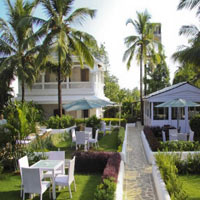 4D/3N
4D/3N
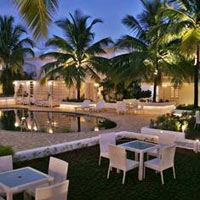 4D/3N
4D/3N
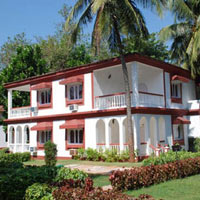 4D/3N
4D/3N
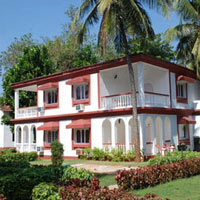 4D/3N
4D/3N
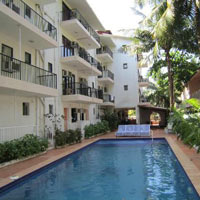 4D/3N
4D/3N
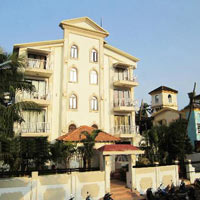 4D/3N
4D/3N
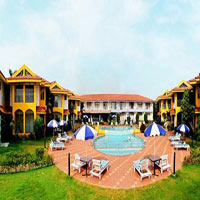 4D/3N
4D/3N
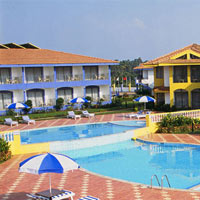 4D/3N
4D/3N
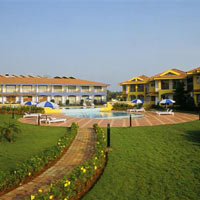 4D/3N
4D/3N
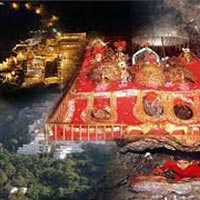 10D/9N
10D/9N
Srinagar - Anantnag - Patnitop - Jammu - Baramulla
 10D/9N
10D/9N
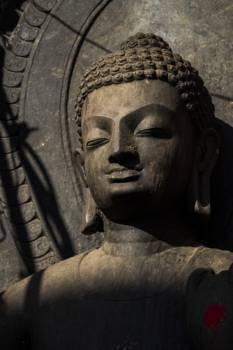 10D/9N
10D/9N
New Delhi - Varanasi - Bodhgaya - Rajgir - Nalanda - Patna - Vaishali - Kushinagar ..
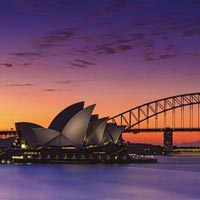 10D/9N
10D/9N
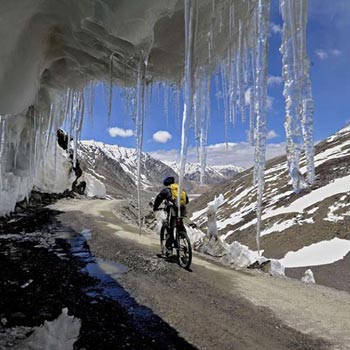 10D/9N
10D/9N
Kinnaur - Kaza - Spiti Romantic Package
Chandigarh City - Shimla - Kinnaur - Kaza - Digboi
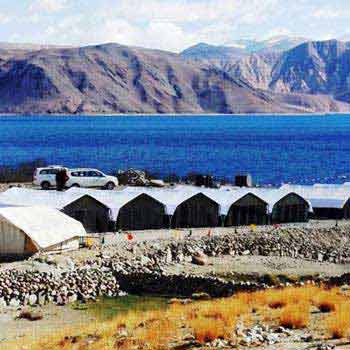 10D/9N
10D/9N
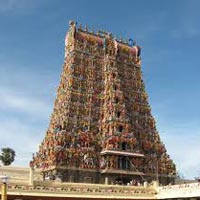 10D/9N
10D/9N
South India - Kerala & Tamil nadu- 9 N/1..
Kovalam - Munnar - Alleppey - Madurai - Kochi - Kumarakom Thekkady
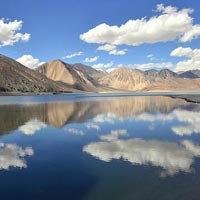 10D/9N
10D/9N
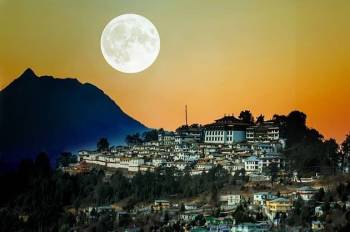 10D/9N
10D/9N
Tawang Kaziranga Shillong Tour
Guwahati - Shillong - Tawang - Kaziranga - Cherrapunji
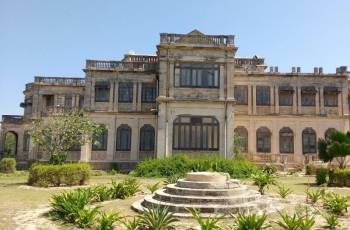 10D/9N
10D/9N
Gujarat Tour Package 9 Night - 10 Days
Ahmedabad - Junagadh - Porbandar - Rajkot - Dwarka - Somnath
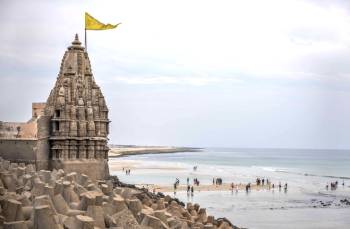 10D/9N
10D/9N
Gujarat Tour Package 9 Night - 10 Days
Junagadh - Rajkot - Vadodara (Baroda) - Dwarka - Somnath - Diu
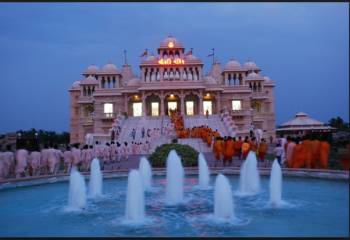 10D/9N
10D/9N
10 Days Gujarat Tour From Ahmedabad
Ahmedabad - Junagadh - Porbandar - Rajkot - Dwarka - Somnath
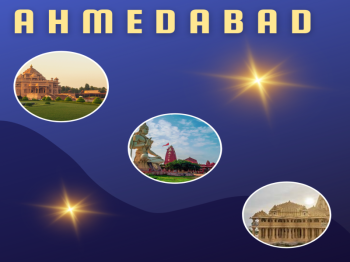 7D/6N
7D/6N
06 Nights / 07 Days - Ahmedabad Tour Pac..
Ahmedabad - Vadodara (Baroda) - Somnath - Dwarka - Narmada
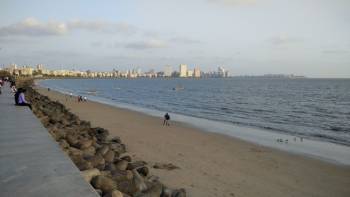 9D/8N
9D/8N
8 Night - 9 Days Gujarat Tour Package
Ahmedabad - Junagadh - Porbandar - Vadodara (Baroda) - Dwarka - Somnath - Narmada
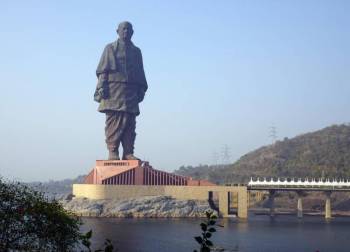 9D/8N
9D/8N
8 Night 9 Days Gujarat Tour Package - 2
Bhuj - Vadodara (Baroda) - Dwarka - Somnath - Diu - Narmada
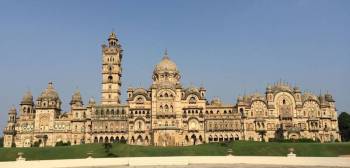 8D/7N
8D/7N
Gujarat Tour Package 7 Night - 8 Days
Ahmedabad - Junagadh - Rajkot - Vadodara (Baroda) - Narmada
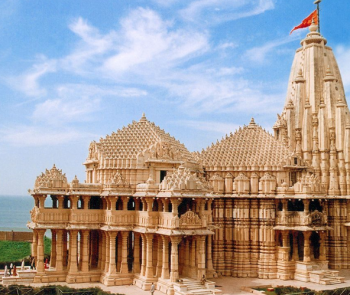 12D/11N
12D/11N
Gujarat Tour 11 Nights - 12 Days
Ahmedabad - Bhavnagar - Junagadh - Rajkot - Dwarka - Somnath - Diu - Narmada
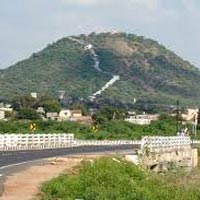 9D/8N
9D/8N
Ahmedabad - Bhuj - Kutch - Dwarka - Somnath - Rajkot - Sasangir